- Home
- >
- Preservation Archaeology Blog
- >
- Life of the Gila: Was Mimbres a World?

(March 13, 2020)—In my last blog post on the diverse archaeological culture area archaeologists call “Mogollon,” I raised the question of whether the Mimbres part of that region could be called a “world” as we have characterized the Hohokam ballcourt world or the Chaco world. In this post, I’ll delve more deeply into that question, and into what distinguishes the Mimbres archaeological culture area from the rest of the Mogollon region after about 1000 CE.
In the decades before the Mimbres Classic period (1000–1130), people in some parts of the Mogollon region made some highly visible changes in their architecture and pottery that make those places look quite different from the areas around them, at least archaeologically. The people who chose to make these changes lived in the eastern part of the Mogollon area, especially the drainages running from the Black Range to the Rio Grande (what archaeologists call the eastern Mimbres), in the Mimbres Valley, and along the upper reaches of the Gila River. (Interestingly, people living along the northern reaches of the San Francisco River and neighboring areas to the northwest, in what archaeologists call the Forestdale, Point of Pines, and Reserve “branches” of the Mogollon archaeological culture area did not make these changes.)
Changes in Architecture
These began in the 900s with the purposeful burning and dismantling of most of the religious buildings archaeologists have labeled “great kivas.” Most were burned and dismantled in just 10 years, between 915 and 925, according to archaeologists Darrell Creel and Roger Anyon. People’s nearly simultaneous destruction of so much religious architecture in a short period must have been a deeply symbolic act. They continued to use the plazas in front of the former kiva spaces, however, and sometimes placed new religious structures and burials of important people in locations that touched portions of the old great kiva buildings. This tells us that people continued to view the former great kiva spaces as important, even though they decided to stop using this kind of religious building.
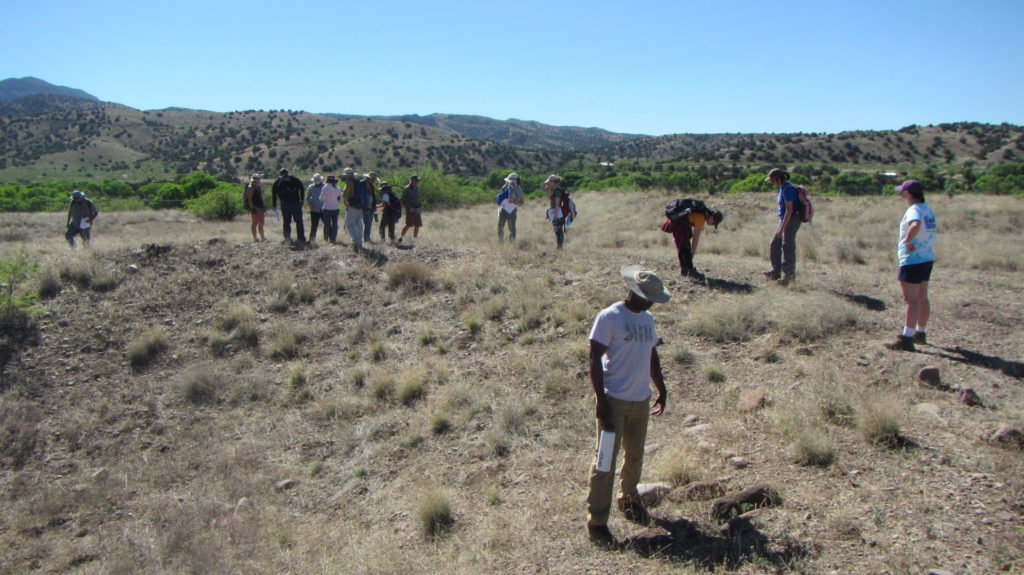
The symbolic destruction of the great kivas heralded some other important changes. In the decades that followed, people stopped building pithouse-style homes and replaced them with aboveground cobble masonry buildings. Unlike the shaped-stone architecture used by people in the Ancestral Pueblo archaeological culture area to the north, Mimbres masonry is often described as “marbles in mud”— unshaped river cobbles stacked into walls and held together with mud mortar.
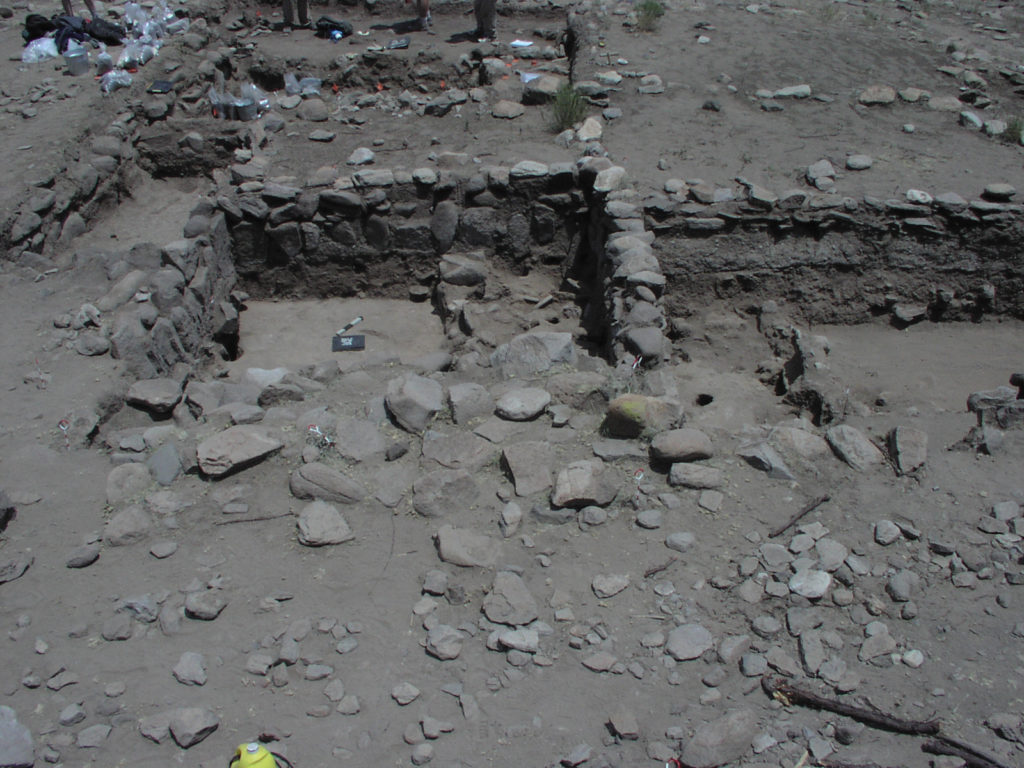
Everyone in the Mimbres area adopted masonry architecture for permanent buildings during the Mimbres Classic period; people elsewhere did not. Residents of regions of the Mogollon culture area to the east (across the Rio Grande) continued to build pithouses, and people to the southwest (in the San Simon area) built temporary jacal (wattle-and-daub) houses. This shows cohesion within the Mimbres area, in that everyone made the same highly visible architectural choices there.
Does this cohesion mean everyone in the Mimbres area lived in the same types of families and social groups? Intriguingly, the answer seems to be “no.” Archaeologists Pat Gilman, Harry Shafer, Michelle Hegmon, Margaret Nelson, and others have investigated how architecture shows variability in the ways people chose to live together. At some Mimbres villages, like Mattocks, individual households built freestanding masonry houses and then added rooms over time, until individual rooms were aggregated into room blocks. At others, like NAN Ranch, large extended families or corporate groups built and gradually expanded large room blocks to house their members. Some households consisted of one room where all indoor activities took place. Other households had “suites” of several different combinations of living rooms and storage rooms joined together by doorways.
There are also regional differences: large villages in the Mimbres Valley include many rooms aggregated into a few room blocks, upper Gila villages have many rooms arranged in many small room blocks, and people in the eastern Mimbres area lived in villages with a few medium-sized room blocks surrounded by small farmsteads. Although everyone in the Mimbres area chose to switch to masonry architecture during the Mimbres Classic period, people could choose to set up their living arrangements within that architecture in a number of different ways.
Changes in Pottery
The most famous hallmark of the Mimbres Classic period is, of course, Mimbres Black-on-white pottery. This is an easy material culture marker for archaeologists—virtually ALL of the decorated pottery people used in Mimbres Classic villages was this type. Although we know people continued to travel and maintain social connections to other areas, they chose not to import any pottery from those places during the Classic period.
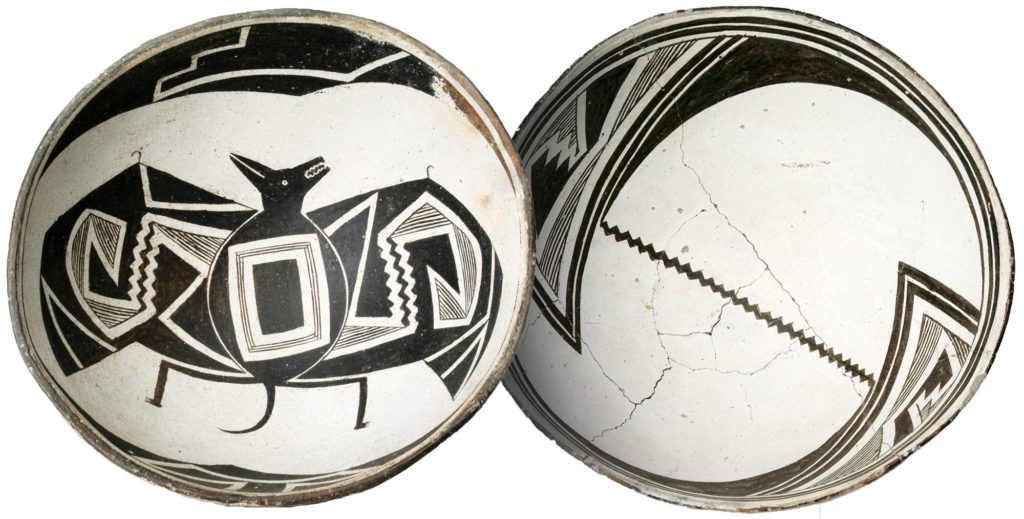
This is another highly visible and symbolic choice to make, because at most other times and places in the ancient Southwest, having pottery from other places was a very important way people displayed and maintained their links to those places. For more than a century, people in the Mimbres area deliberately chose not to use pottery that showed those outside social connections, but instead used only their own highly distinctive Mimbres style decorated bowls.
Does this mean Classic Mimbres pottery did not leave room for diversity? Here, the answer seems to be “yes and no.” There were clear rules governing some aspects of pottery designs and layouts; this is part of what makes Mimbres Classic Black-on-white pottery so distinctive. There is a lot of variability in the designs themselves, though, including a large range of different geometric patterns and images of animals, people, and other scenes people chose to paint on their bowls.
There is also diversity in pottery production. In some villages, people did not make their own decorated bowls, and residents had to obtain them from other villages in the regiThomas Griberon. In contrast, potters in other villages made large numbers of bowls that people carried to many other villages (those that produced pottery and those that did not) and used there. Making decorated bowls was not restricted to one area, though; chemical sourcing by archaeologists Darrell Creel and Jeff Speakman, among others, shows that potters made these bowls in the Mimbres Valley, upper Gila, and eastern Mimbres areas.
Even in villages where people made decorated pottery, not everyone made it. Close study of pottery designs and painting techniques by Steven LeBlanc, Thomas Gruber, and others shows that just a dozen or so individual potters or pot-making groups may have painted all of the known decorated Mimbres bowls. So, although everyone used these bowls, there was a lot of diversity in where they were made and by whom.
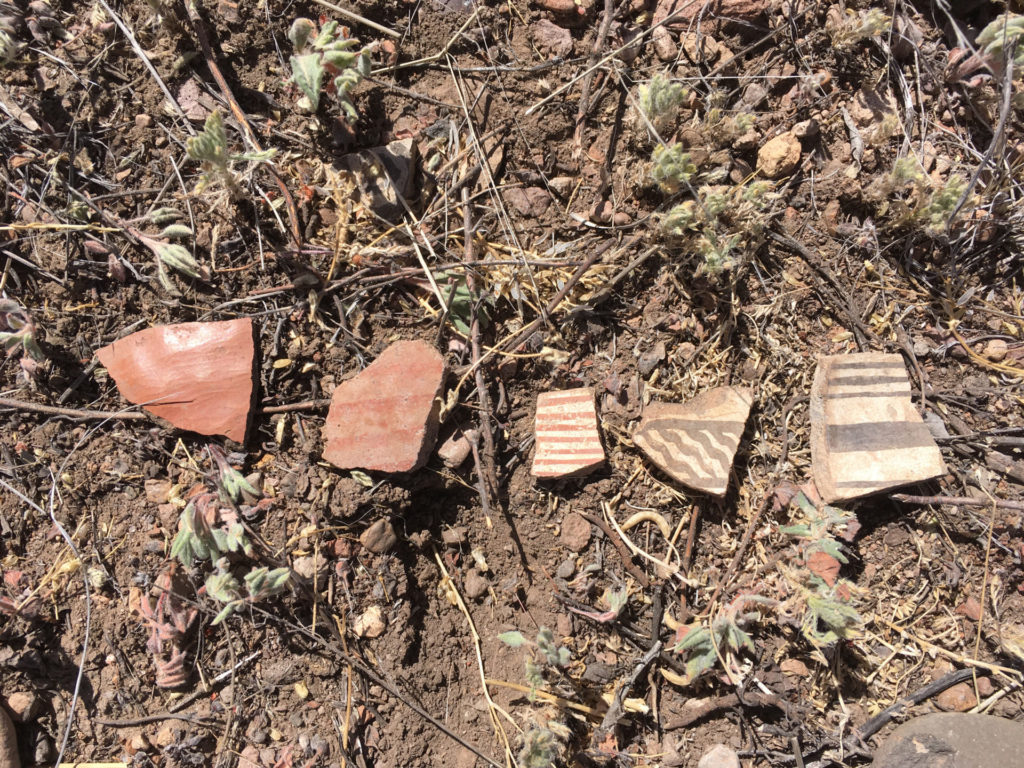
What Did It Mean to Be Part of What Archaeologists Call “Mimbres”?
There is a strong theme here: lots of diversity, and yet, under an umbrella of social cohesion, people choosing to do certain highly visible things in the same ways. After burning most of their older-style religious buildings, everyone in the Mimbres area switched to cobble masonry architecture, used only Classic Mimbres black-on-white decorated pottery, and most often buried their deceased relatives under the floors of houses with one or more of their distinctive black-on-white pottery bowls. All of these choices send an important message about being part of what archaeologists now call “Mimbres.”
What made these signals of social cohesion so important at this time, especially across a fairly large and otherwise diverse area? Archaeologists have several answers to this question.
One part of the answer is that when people live in large groups, organizing them and getting them to agree becomes more and more difficult. We all know this from life experience, but there are also many anthropological studies of the different circumstances that make this an even harder problem for people to solve. Human populations rose to unprecedented levels in the Mimbres Classic, and having clearly visible ways of signaling that everyone had some important things in common (such as masonry architecture) would have helped alleviate some of the social tensions that come with lots of people living close together and choosing not to conform in other ways (such as household setup). Having some form of institutionalized leadership in place would have helped to ease group decision-making, resolve conflict, and organize group activities like maintaining and using the canals that irrigated agricultural fields in the Mimbres Valley.
Another part of the answer comes from hints at ancient religious symbols. The beginning of the Mimbres Classic period also marks the earliest appearance of scarlet macaws, which were imported to the area from Mesoamerica, along with iconography Pat Gilman and others associate with the Hero Twins, who were important religious symbols in Mesoamerica. Many archaeologists agree that although we don’t see signs of differences in house size, access to food, or other “wealth” during this time period, some individuals seem to have had special social roles in leadership and religion. Those men and women were given different (though not “richer”) burials when they died, had access to small but important religious spaces in villages (including some of the oldest rooms, which switched from being “regular houses” to becoming religious rooms and burial places), and had other important roles, like the individuals (mostly women) who handled rare and important live macaws.
These important individuals were not wealthier than others in their communities, but they did have special roles to play when decisions were made, when religious activities were scheduled, and at many other times we don’t have much archaeological information about. People with these special roles probably came from certain families or lineages—perhaps the initial founding families that began some of the large villages three or four centuries earlier. These significant families interred their deceased relatives in the important burial places in religious rooms in their villages, a practice that would have cemented ties to vital religious functions, to important ancestors, and perhaps also to the land, if these founding families also had close ties to certain traditional farming areas around their villages. Although only certain individuals and families had these roles, their activities were important in tying everyone together, both within Mimbres villages and across the larger region.
Changes Come Again
Around 1130, another time of great change came to the Mimbres area. People mostly stopped making and using the Classic Mimbres pottery that had been such a strong marker of belonging for more than a century. People also decided to move out of most of their villages, and many stood empty. Other villages housed a few people, who stayed in a much smaller group and began using decorated pottery from other places. Some people left the area altogether, especially in the upper Gila and parts of the Mimbres Valley. Other people left their village residences and moved permanently into small hamlets built alongside the fieldhouses their families had previously used as secondary, seasonal dwellings near their farmland. This was especially characteristic of the eastern Mimbres area.
Although some families continued to use some Mimbres pottery for a few decades, they also began using decorated pottery from surrounding regions, highlighting their social connections to those places in a way no one in the region had chosen to do for well over a century. Notably, the ways in which people chose to stop using Mimbres pottery and stop living in architecturally distinctive Mimbres villages varied from place to place, echoing the underlying diversity in how these people had always chosen to set up their households, obtain their decorated pottery, and organize their villages.
What did this change mean to people in the 1100s, and why did it happen? Archaeologists tend to favor multicausal explanations for this. A less favorable climate for farming after 1100 made making a living more difficult than people were used to, though not impossible. Irrigation would have been especially hard-hit by these changes. The effects of centuries of farmers hunting and gathering wild resources may also have contributed to people’s perceptions that their resource situation was “not what it used to be.” Social tensions associated with ever-larger village populations made it harder to keep everyone happy.
All of these factors probably contributed to a growing perception among villagers that their old social system was not working anymore, and that their religious leaders and ceremonial activities were no longer functioning as well as they once had. People no longer felt that being a part of the “world” that Mimbres pottery represented was a good choice. Important aspects of the Mimbres World, like coordinating irrigation agriculture and reinforcing the power of group ceremonies and leaders, depended on the participation of multiple communities together, so when people began deciding to pull away, these practices faded relatively quickly.
During the Classic Mimbres period, people chose to use architecture and, especially, distinctive pottery to show that they belonged to a Mimbres “world” that encompassed a large geographic area in which people could choose to live in otherwise diverse ways. Choosing to use Mimbres decorated ceramics exclusively was a deeply symbolic act in the 1000s. By showing membership in this world, people were showing that they subscribed to a shared set of ideas about religion, leadership, and belonging to a large scale social group—much larger than the villages and valleys where individuals had regular face-to-face interactions. When people stopped using this distinctive pottery, they also stopped signaling their participation in this larger social group. People continued to farm, gather, and hunt along the rivers and streams of this region as they had for centuries, but their pottery and houses were no longer characteristically “Mimbres” and their traces on the landscape are harder for archaeologists to identify and classify today.
After 1130, the Mogollon region becomes more challenging for archaeologists to understand. People living in different parts of this area used a wide range of different pottery types, architecture, and mortuary practices. We don’t see a new world emerge that encompasses the same geographic area as Mimbres; instead, people chose to become parts of a variety of other, different overarching social groups. This should not surprise us, though—it highlights how being part of a world like the Classic Mimbres means joining with multiple smaller groups, each with different traditions.
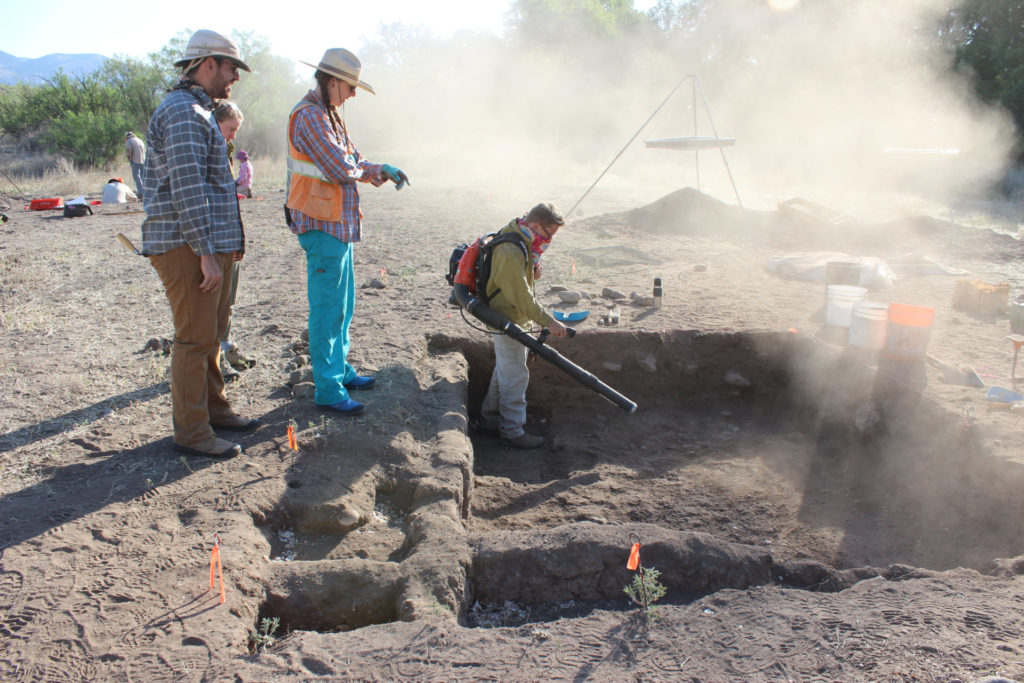
Next week, Jeff Clark will be back with an essay on Salado.